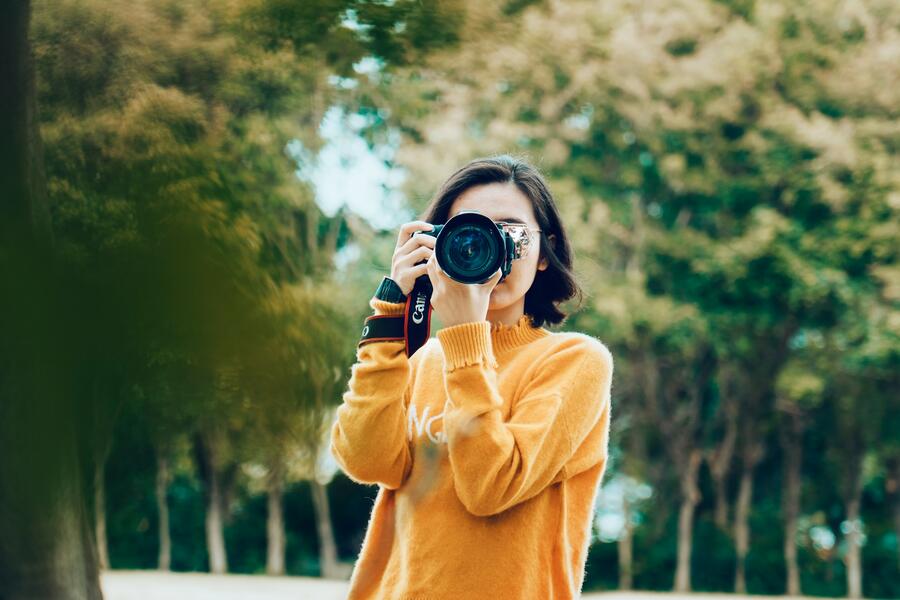Choosing the Best Lens for Your Budget: A Student Photographer’s Guide

As a student photographer, choosing the right lens within a tight budget is a common challenge. It’s about finding the balance between cost and quality, which isn’t always easy.
In this guide, we’ll walk you through how to make smart, cost-effective choices. You’ll learn to understand lens specifications, consider your photography needs, and make the most of your budget.
Let’s dive in and find out how you can enhance your photography without breaking the bank.
Understanding Lens Specifications
Understanding lens specifications is key to choosing the right lens. Aperture, which controls how much light enters the lens, is crucial for low-light photography. A lower f-number means a wider aperture, allowing more light and creating a shallow depth of field.
Focal length affects your lens’s angle of view. Shorter focal lengths offer a wider angle, great for landscapes, while longer focal lengths are ideal for portraits or wildlife photography.
Image stabilization helps reduce blur from camera shake, especially in handheld shooting. If your schedule is tight, consider a custom term paper writing service EssayPro to free up time for photography research and practice.
Knowing these specs helps you pick the right lens for your photography style.
Budget Constraints for Students
Student photographers often face tight budget constraints. With academic expenses already high, investing in photography gear can be challenging.
It’s important to prioritize your needs over wants. Focus on what you need to achieve your photography goals rather than getting the most expensive gear.
Consider starting with a versatile lens that can cover various photography styles. This approach is more cost-effective than buying multiple specialized lenses. Remember, the best lens isn’t always the most expensive one – it’s the one that meets your needs within your budget.
Entry-Level Lenses
For beginner student photographers, affordable lenses like the Canon EF 50mm f/1.8 STM are ideal. This lens is known for its versatility and excellent image quality, despite its relatively low price. It’s great for a variety of photography styles, from portraits to everyday shots.
Starting with such a basic yet versatile lens teaches you to be creative with your compositions. It also helps you understand the basics of aperture, depth of field, and focal length without overwhelming you with too many features.
Investing in an entry-level lens like this means you can spend more time mastering photography basics without the pressure of handling expensive equipment.
Mid-Range Options
For students who have gained some experience and are looking to upgrade, mid-range lenses like the Nikon AF-S DX NIKKOR 35mm f/1.8G are a great choice. These lenses offer a balance between affordability and enhanced features, making them suitable for more serious photography while still being budget-friendly.
Mid-range lenses often provide better image quality, more robust build, and improved performance in low light compared to entry-level lenses. They are a smart investment for students ready to explore more advanced photography techniques without the high cost of professional-grade lenses.
Opting for a mid-range lens can be a stepping stone to professional photography, giving you a taste of advanced features while keeping costs manageable.
Second-Hand Lenses
Buying second-hand lenses can be a great cost-saving strategy for student photographers. It allows access to higher-quality lenses at a fraction of the cost.
When buying used lenses, inspect them carefully. Check for any scratches or fungus on the lens elements, ensure the autofocus is smooth and accurate, and confirm that the aperture blades are free from oil and move smoothly.
It’s also wise to test the lens, if possible, before finalizing the purchase. Remember, a well-maintained used lens can be just as effective as a new one, making it a smart choice for budget-conscious students.
Maximizing Limited Resources
Making the most of a limited lens kit involves mastering various shooting techniques. Even with just one or two lenses, you can experiment with different styles – from macro shots using extension tubes to creative bokeh effects.
Learning through experimentation is key. Try different settings and compositions, and see what works best for your style. Online resources and communities can be invaluable for tips and inspiration.
If you’re juggling photography with academic responsibilities, utilizing services like the best dissertation writing service can help manage your time more effectively, allowing more room for photography practice and learning within your budget constraints.
Conclusion
In conclusion, choosing the right lens within a budget is a crucial skill for student photographers. It’s about understanding your specific needs and balancing them with your financial limitations. Whether starting with an entry-level lens, opting for a mid-range upgrade, considering second-hand options, or maximizing a limited kit, each decision should be made with careful consideration.
Remember, the best lens is one that not only fits your budget but also helps you grow and excel in your photography journey. Stay informed, experiment, and most importantly, enjoy the process of capturing the world through your lens.









